Taoism, or Daoism, is indigenous to China. Together with Confucianism, it has exerted great influence on the mind of Chinese people, as well as on the political, economic and cultural life of the country. In many ways the doctrines of Confucianism and Taoism complement each other, running side by side like two powerful streams through later Chinese thought and literature.
Foundation and Spread of Taoism
As a religion, Taoism was firstly founded by Zhang Daoling in the in Shundi (an emperor) period (126 - 144 AD) of East Han Dynasty, and has had a history of more than 1,800 years. But Lao Zi was the creator of this religion. Taoism is a genuinely Chinese religion. Some hold the opinion that without understanding it, there can be no understanding of Chinese culture.
The basic ideas of Taoism are Changsheng (long living), Shen (god), and Xian (immortal), etc., and its doctrine has evolved from the academic thought of Taoists in the Spring and Autumn, and Warring States Period (770-256 BC). In addition, nature-worshiping and ghost-worshiping, popular in ancient Chinese society, also contributed a social and cultural basis to the formation of Taoism.
The Taoists made Laozi their supreme god, taking Dao De Jing as their cannon, with Zhang Ling, the founder, as the Sect's Heavenly Teacher.
During its popularization since its birth, Taoism had long been a kind of high-level culture, and widely pursued by the upper-class society. Consequently, many leaders of Taoism had gained great respects from the imperial governments. However, since the 12th century, Taoism began to decline due to its own reasons, the attitude change of the government as well as the revival of other religions. From then on, Taoism started to spread in the lower-class society, and its witchcraft elements facilitated its influence on the lower-class society.
Since the Ming Dynasty (1368-1644), the influence of Taoism on folks had become stronger and stronger. In the mean time, people held a mussy, superstitious, and vulgar faith in religions because of their illiteracy. During this period, Taoists were of low quality, and knew little about the doctrine and laws of Taoism. They could only carry out some religious rites to satisfy people's demand. Along with the decline of the normal Taoism, some folk religions of even lower level, which were even more ridiculous in both form and content, prospered in the name of Taoism.
As the later Taoists built their doctrines on ancient witchcraft and recipes for immortality, absorbing all sort of popular superstitions and demon lore, the Taoist school became more and more a cult of popular religion and finally, an object of ridicule among the educated people.
Scholars of Taoism
Lao Zi -creator and founder of Taoism
Lao Zi is regarded as father of Chinese philosophy. According to the Shi Ji, or Records of the Historian, by Sima Qian , Lao Zi was named Li Er, with Dan as his alias. He was a reputed thinker around 6th century B.C. There are many legends about Lao Zi but few historical records. He left a 5, 000-word book and went on his ox from Hangu Pass and to where nobody knows! Lao Zi's 5,000 words are rather concise compared to his profound ideological system but there were numerous books interpreting the true meaning of his book.
Lao Zi was a great philosopher, thinker, educator and the founder of the Taoist school of thought in ancient China .According to the extant historical documents, Lao Zi was a learned, sharp-eyed, forethoughtful, and eloquent wise man, which might have something to do with his experience as a historiographer in charge of the libraries of the Eastern Zhou Dynasty (770-256BC). He pointed out that it was the severe exploitation of the rulers that caused people to starve. Confucius , the founder of Confucianism, consulted with Lao Zi many times and once compared him with a dragon, which exemplified how enigmatic Lao Zi was.
Lao Zi held that everything was linked with and dependent on one another. Each pair of yes and no, easy and difficult, long and short, etc. was a contrastive unification. If one side didn't exist, there wouldn't be the other. He also asserted that the two opposite sides could be converted. Meanwhile, dissatisfied with the social reality of in-fighting and hard life, he advocated a society of a small country with a small population and no communications with neighboring countries. Many of his viewpoints and principles of life such as the weak overcoming the strong, holding oneself aloof from worldly success, emptying the heart of desire, adopting an easy-going manner, retiring at the height of one's career, being selfless and modest, etc. have exerted great influence on the Chinese mind and have been applied to politics, economy, military affairs, culture, business, and social intercourse.
The biggest achievement of Lao Zi is his book Dao De Jing ( Classic of the Tao and Its Power ). Driven by an unceasing desire to escape to the unknown, the aged philosopher decided upon his journey to the unknown. In a two-wheeled carriage drawn by black oxen, he set out to leave the deluded, society-corrupted world behind him. But at the western pass he was forbidden to go through the gate, until he had written his philosophy. Laozi, thereupon, lingered in the gatehouse long enough to compose the treatise that came down to us as Dao De Jing in which he expounded his views in succinct, crisp sentences, some even obscure and cryptic. Then he departed over the pass, to be heard of no more.
Dao De Jing is actually a 5,000-word philosophical poem in verses, which consists of two parts: Dao Jing, with an emphasis on philosophy, and De Jing, with an emphasis on politics and military affairs. Dao De Jing, putting forward metaphysics systematically for the first time to the real formation of Taoist school of thought, plays a key role in the formation of ancient Chinese philosophy. Early in the Western Han Dynasty (206BC-8AD), the ruling class practiced a kind of so-called Huanglao (Emperor Huang and Lao Zi) politics, characterized by Taoist doctrine of governing by doing nothing, and realized a quick economic instauration, known as Reigns of Wen & Jing (prosperity in the period of Emperor Wen and Emperor Jing) in history.
Zhuangzi-the second great figure of the early Taoist school
Zhuangzi is the second great figure of the early Taoist school which is known as the “philosophy o Lao Zi and Zhuang” in the history of Chinese Culture. The book bears his name, is probably a combination of his own essays and those of his disciples and imitators. It is one of the most witty and imaginative works of all Chinese literature. Like Laozi, it does not depend upon methodical arguments for its effect, but upon the use of parable and allegory, paradox and fanciful imagination.
Zhuang Zi shares with Lao Zi the central concept of Tao as the principle underlying and governing all existence. However, he is not so much concerned with the Tao as a guide to life but as a way to transcend human life, which has a supreme value in itself. A philosophy of acceptance, Lao Zi teaches the Way of the world and the virtues of survival: humility, gentleness and nonstriving. Zhuang Zi, on the other hand, is indifferent to human society. He seeks neither to reform things nor to keep them as they are, but to rise above them. Zhuang Zi ‘s central concern may be described as the finding of absolute happiness of transcending the distinction between one's self and the universe by perfect union with the Tao
Taoism Folk Customs
As a Chinese native religion, Taoism has a close relationship with Chinese folk customs. With the development of Taoism, it has become deep-rooted in, and the practices of, the ordinary people. This can be seen both in Taoist religious festivals and sacrifice-offerings.
There are many Taoist festivals, and quite a few of them have evolved into folk festivals. For example, the Double Ninth Festival on September 9 of lunar calendar came from the Taoist festival. It is said that in the Eastern Han Dynasty (25-220), there was a Taoist immortal named Fei Changfang, who was resourceful enough to drive all devils away. At that time, he had a pupil called Huan Jing. One day, Fei Changfang foresaw a disaster on September 9 in Huan Jing's family, and told Huan Jing to fasten a bundle of dogwood onto his arm, and drink chrysanthemum wine in an elevated place so as to prevent the disaster. Having done what he had been told, Huan Jing's family was indeed safe and sound. Along with the spreading of Taoism, this legend has evolved into the Double Ninth Festival. When the day comes, people will carry dogwood and drink chrysanthemum wine in elevated places. Another example is Beijing's Yanjiu Festival (literally swallow nine), also known as Yanjiu (banquet nine), which is on lunar January 19. This day is the birthday of Qiu Chuji, the ancestor of Quanzhen Tao (meaning totally true), a main branch of Taoism - and a Taoist festival to commemorate Qiu. Later on, it was rumored that Master Qiu would be sure to come on this day, so all the visitors would sit and wait to see the immortal. In this way, it gradually became a folk activity. In the past,Beijing people went and gathered in Baiyuan Temple to worship and offer sacrifices to Master Qiu, which was considered as a meeting with the immortal. Therefore, nowadays, these festivals are not only the days for Taoists to hold religious activities, but also have become folk festivals. Together with various kinds of temple fairs, they have evolved into a part of folk economic activities as well as cultural entertainment with special local features.
Many immortals in Taoism came into being on the basis of earthy folk gods, and thus the Taoist god-worshiping system has much in common with the earthy folk god-worshiping. On the one hand, a number of earthy folk gods such as Caishen (mammon), Chenghuangshen (city god), Dongyuedad i(god of East Mountain) andGuanshengdi (god of Saint Guan) have become part of the pedigree of folk gods; on the other hand, Taoist immortals such asLaojun(Holy Lord),Yuhuangdadi (Jade Emperor) and Baxian (eight immortals) have become widespread and part of people's life.
Moreover, some Taoist taboo tricks have an extensive influence on the folk society, especially in the countryside; or rather, they have constituted a necessary part of folk customs. The combination of Taoism and Chinese folk customs is in various aspects, but it is mainly embodied in celebrations of festivals and seasonal changes and spirit worshiping.
Wudang Martial Arts
Except of the mental relieve of people's mind; another major aspect of Taoist influence on Chinese culture is its martial arts. Chinese martial arts of all sorts have a long history and a great diversity of methods and styles. Generally speaking, they are divided into two schools: the south school and the north school.
The north school originated from Shaolin Temple, the Holy Land of Buddhism, and is called the Shaolin Sect, with its boxing called as Waijiaquan. The south school originated from Wudang Mountain, the Holy Land of Taoism, and is called the Wudang Sect, with its boxing called as Neijiaquan. Thus Wudang and Shaolin are considered as the two main and important sects of Chinese martial arts.
Wudang martial arts are a great contribution of Wudang Taoism, which is a famous branch of Chinese Taoism.It is said that the father of Wudang Neijiaquan is Zhang Sanfeng, an outstanding Taoist. When practicing asceticism on Wudang Mountain , he saw a fight between a pied magpie and a snake, which enlightened him a lot. Based on the postures of the two animals, he eventually created the unique Wudang boxing. It has been developed and enriched successively by the great masters over the generations, and has now grown into one of numerous schools and varieties with rich contents.
Wudang boxing includes boxing varieties such as Taiji (shadowboxing), Xingyi (shadow boxing that imitates the movements of animals or birds of various kinds and integrates physical motions with concentration of the mind), and Bagua (eight-trigram boxing), weapon arts such as Taijiqiang (Taiji spear) and Taijijian (Taiji sword), Qinggong (light skill), stunt, and various Qigong (a system of deep breathing exercises) for health.
As a main sect of Chinese martial arts, Wudang martial arts are heading for the world, and have attracted a lot of martial arts fans from all over the world.
Taoist Architecture
Taoist architecture mainly refers to the Taoist temple buildings, which basically consist of the divine hall, the alter, the room for reading sculptures and practicing asceticism, the living room, the reception room for pilgrims, and the park where visitors can have a rest. The general layout adopts the form of Chinese traditional courtyard, with the divine hall on the mean axis and the reception room and Taoists' living room, etc., on both sides. Together with a park cleverly built on the basis of the architectural complex, a kind of fairyland thus comes into being.
Taoist temple buildings also clearly reflect Taoists' strong will in the pursuit of happiness, longevity and immortality. The existing Taoist architectures were mostly built in the periods of the Ming and Qing dynasties (1368-1911). Some important buildings have been listed as the national or provincial key cultural relics under special protection. As a kind of precious inheritance, their design, layout and craftsmanship are still worthy of borrowing in modern architecture.
Top Taoism Attractions

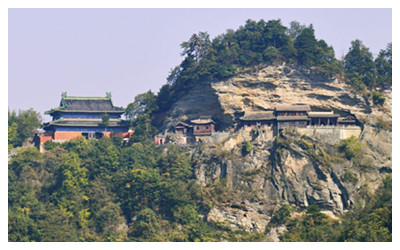
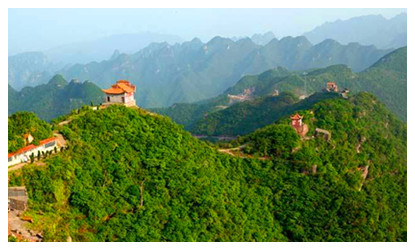
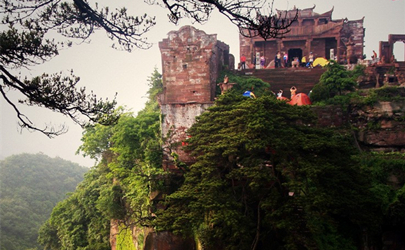

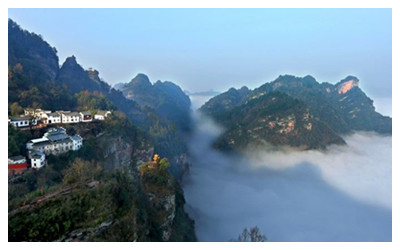
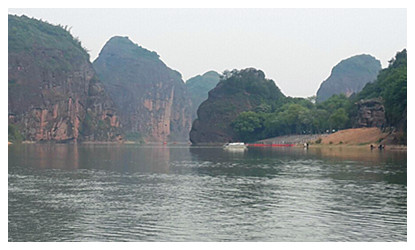
 Ask Questions ?
Ask Questions ?